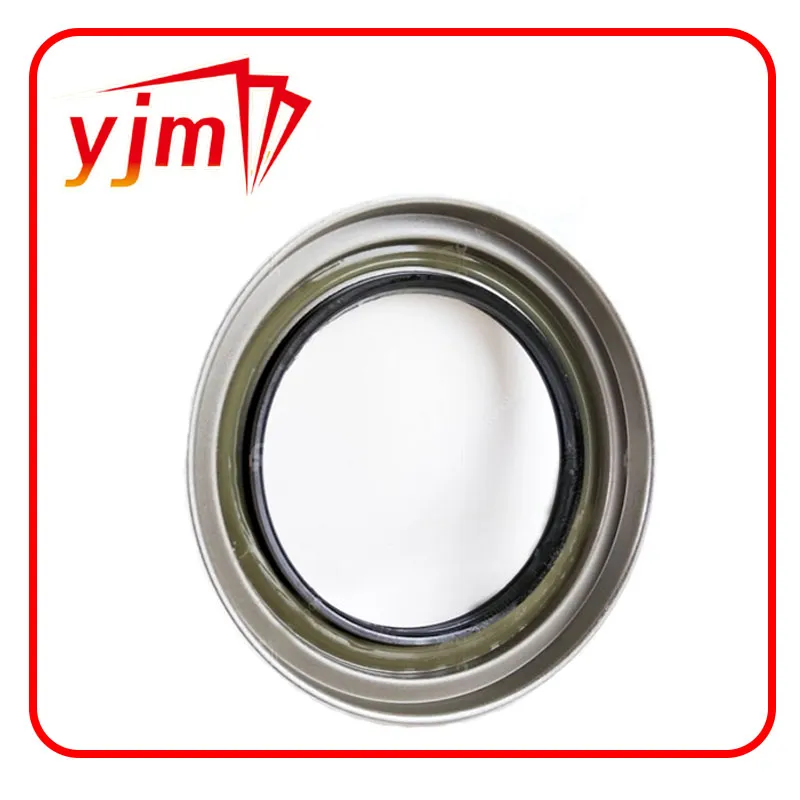rear axle bearing seal
Understanding Rear Axle Bearing Seals Importance, Function, and Maintenance
In the world of automotive engineering, every component plays a crucial role in ensuring the smooth operation of a vehicle. Among these components, the rear axle bearing seal is often overlooked, yet it is vital for the longevity and performance of a vehicle. This article explores the purpose, functions, and maintenance of rear axle bearing seals, shedding light on why they deserve more attention than they typically receive.
What is a Rear Axle Bearing Seal?
A rear axle bearing seal is a crucial component of a vehicle's rear axle assembly. It is typically positioned where the axle shaft exits the differential or housing. The primary function of this seal is to prevent lubricant from leaking out of the axle assembly and to keep external contaminants, such as dirt and moisture, from entering. Leakage or contamination can lead to severe damage to the bearings and gears, resulting in increased wear and tear, and ultimately, costly repairs.
Importance of Rear Axle Bearing Seals
1. Lubrication Retention The rear axle assembly relies on proper lubrication for smooth operation. The bearing seals help retain the lubricant, allowing it to effectively reduce friction between the moving parts. If a seal fails, the lubricant can escape, leading to overheating and possible failure of the bearings.
2. Contaminant Exclusion In addition to keeping lubricants in, rear axle bearing seals serve as a barrier against contaminants. Dirt, grime, and moisture can damage the internal components of the axle, leading to rust and corrosion. A damaged seal can allow these harmful substances to enter, exacerbating the wear on the bearings and increasing the likelihood of a breakdown.
3. Safety and Performance A compromised rear axle can lead to handling issues and decreased vehicle stability. This can pose safety risks, especially at high speeds or during adverse weather conditions. A good seal ensures that the axle operates as intended, maintaining optimal performance.
Signs of a Failing Rear Axle Bearing Seal
Recognizing the signs of a failing rear axle bearing seal is essential for proactive maintenance. Common indicators include
rear axle bearing seal

- Oil Leaks Puddles or spots of oil beneath the vehicle can signal a failing seal. - Unusual Noises Grinding, whining, or humming sounds from the rear axle area may indicate that the bearings are suffering from insufficient lubrication due to seal failure. - Vibration or Handling Issues If the vehicle feels bumpy or unstable, it may be a sign that the rear axle components are not functioning correctly, which could be linked to seal issues.
Maintenance of Rear Axle Bearing Seals
To ensure the longevity of rear axle bearing seals, regular maintenance is essential. Here are key practices
1. Routine Inspections Regularly inspect your vehicle, especially the rear axle area, for signs of leaks or unusual noises. Catching potential issues early can save money and prevent more extensive repairs.
2. Regular Lubrication Checks Ensure that the lubricant in the rear axle is at the appropriate level and in good condition. If the fluid appears contaminated or is low, it may indicate a failing seal.
3. Timely Replacement If a seal is found to be damaged or worn, replace it promptly. This simple maintenance task can prevent larger issues down the road.
4. Professional Assistance If you are unsure about the condition of your rear axle bearing seals, it’s wise to consult a professional mechanic. They can provide a thorough inspection and perform necessary replacements or maintenance.
Conclusion
Rear axle bearing seals are critical for the proper functioning of a vehicle's rear axle assembly. By understanding their importance, recognizing the signs of failure, and committing to regular maintenance, vehicle owners can ensure the longevity and reliability of their vehicle. Neglecting these seemingly small components can lead to more significant issues down the road, making awareness and upkeep of rear axle bearing seals vital for any vehicle maintenance routine. Whether you’re a seasoned car enthusiast or an everyday driver, paying attention to these components can enhance your vehicle's performance and safety.
-
Understanding the Front Main Engine Seal: Purpose, Maintenance, and Installation
News Jul.29,2025
-
Understanding O-Rings and Seal Rings: Types, Applications, and Custom Solutions
News Jul.29,2025
-
Understanding Crankshaft Oil Seals: Rear Seals, Pulley Seals, and Their Role in Engine Integrity
News Jul.29,2025
-
The Importance of Front and Rear Crankshaft Seals in Engine Performance and Oil Management
News Jul.29,2025
-
Crank Oil Seals: Functions, Types, and Cost Considerations in Engine Maintenance
News Jul.29,2025
-
A Comprehensive Guide to O-Rings and Seals: Types, Materials, and Global Applications
News Jul.29,2025
-
Mastering Diesel and Performance Engine Maintenance: A Guide to Critical Oil Gaskets
News Jul.28,2025
Products categories















